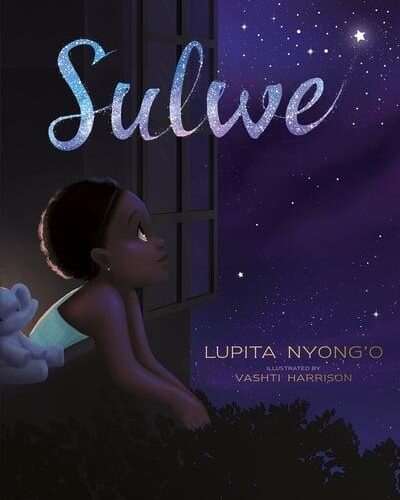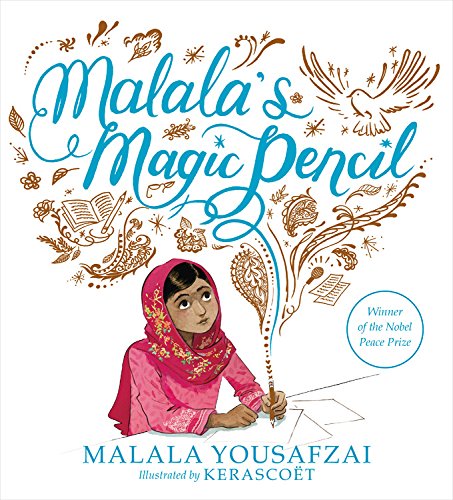
A diverse reading list: Starting young
When the author Cressida Cowell became Children’s Laureate last year, she declared on her Laureate Charter that ‘every child has the right to see themselves reflected in a book’.
In these times when we recognise the need to encourage young people to read, it’s important that children see fictional characters they can identify with. Many readers can remember that feeling when the characters they read about may as well be creatures from Mars, for all they had in common. It used to affect young readers who were working class, for example. But while representations of different social backgrounds have improved in children’s fiction, the same can’t yet be said of ethnicity.
A number of authors have already spoken out about this. Philippine-born Candy Gourlay says on her website that she always wanted to write – but “people who looked like me never appeared in books. Clearly we weren’t allowed.” Malorie Blackman tells how hard it was to find a picture book with children who had brown skin and curls like her own daughter.
According to the Reflecting Realities report (2019) by the Centre for Literacy in Primary Education, only four per cent of children’s books published in 2018 in the UK had a minority ethnic hero. The survey included all new books for children aged between three and 11. That’s gone up from one per cent in 2017, but it’s still a woefully small figure.
To put this in perspective, some 42% of children’s books published in the UK in 2018 had animals or inanimate objects as “main cast characters”. So in fact, the report says, “a reader from a BAME background is much more likely to encounter a book where an animal is the main character than they are to encounter a book that contains a character that shares their ethnicity or cultural heritage”. Of course, that is not the case for young white readers.
It gets worse: the non-white characters, when they are present in children’s books, are often poorly illustrated. The report says that a significant number of books featured characters “drawn with exaggerated features that amplified their ethnicity in a way that reduced them to caricatures. We observed instances of colourism, in which there was a direct correlation with the skin tone and the virtue of a character. The more virtuous the character, the lighter their complexion and vice versa.”
This is not the finding of a single study. The Guardian analysed the top 100 bestselling illustrated children’s books published in 2018 to find that only five featured a black, Asian or minority ethnic (BAME) main character with three of those being the same character, the mixed-race burglar Lanky Len from the What the Ladybird Heard series. Not one single author or illustrator on the list was identified as BAME.
Cressida Cowell announced this month she has teamed up with to promote authors and illustrators of colour. #PassThePen will place emerging talent with high-profile stars, who will give up their Instagram platform for a day so that new creators can share information about themselves and their work.
Some of those taking part in the scheme, which will run from 16-22 November, include Nadiya Hussain, Rob Biddulph, Dapo Adeola, Onjali Q. Raúf, and Dermot O’Leary.
Meanwhile, Cowell will host a different author or illustrator each day throughout the week, and will continue #PassThePen on a monthly basis after that. It sounds like a great scheme, if a slow burn.
While it’s absolutely true that there are too few books written by non-white authors or with ethnically diverse characters, that’s no excuse not to seek them out, because there are some wonderful ones out there. Or maybe you’re full of good intentions to create a more diverse reading list for the younger members of your family or friends – but don’t know where to start?
In the nursery, of course! There are some truly beautiful picture books, such as the counting book We All Went On Safari by Laurie Krebs, set in the Tanzanian grasslands and helping children to learn to count in English and Swahili. Little Red and the Very Hungry Lion (Alex T Smith) is a twist on Little Red Riding Hood, but with a rather more assertive main character! Anna McQuinn’s If You’re Happy and You Know It features illustrations showing a diverse view of the world and a CD of the well-known song with multilingual characters saying hello.
Lupita Nyong’o based her story Sulwe on her own experiences of feeling isolated because of her dark skin. Benjamin Zephaniah’s poetry collection for children, Funky Turkeys, is great fun. Malala’s Magic Pencil tells the story of Nobel Peace Prize winner Malala Yousafzai’s life growing up in Pakistan.

For middle grade children (9 – 11), Salman Rushdie’s Haroun and the Sea of Stories is a lovely read. Jamila Gavin’s short stories in the collection Blackberry Blue are beautifully written. And for young teens, Malorie Blackman’s Noughts and Crosses and Pig Heart Boy have rightly become classics.
Is this down to you, as a parent, grandparent, aunt, uncle, godparent? Yes, it is. Children don’t buy their own books; they’re bought for them and they read what they can get their hands on (if it’s engaging). Reading is all about putting ourselves in others’ shoes: so let’s all make sure there’s a genuinely diverse choice out there.
|
|







‘Every child has the right to see themselves reflected in a book’. My goodness this ‘right’ has been a long time coming… This lack of representation I subconsciously recognised aged 5 when I started school, when the only people represented in books looked like Ladybird’s reader ‘Janet and John’. Always white, always middle class and living in suburbia. This was a long time ago…
Fast forward 50 plus years later, I recently had the joy of reading to a group of 4-5 year albeit remotely by video- a book called ‘Ruby’s Worry’ by Tom Percival. My attention initially was caught by the illustration of a young black girl with cornrows and cute afro puffs. A superb story by the way.
I personally welcome Cressida Cowell intention (and it’s about time) that authors of the BAME community had their stories published but doesn’t this all depends on the willingness of publishers…to take ‘a risk’ and publish the non-famous too?
Absolutely, Nathalie. And thank you for the reading recommendation – another good one!
“Is this down to you, as a parent, grandparent, aunt, uncle, godparent? Yes, it is.”
I want to recognise the institutionally racist society into which I was born. It was a white world populated by white people. At school I was taught white history where the colonial past of my country was celebrated in the actions of ‘great men’ who have since been exposed for who they really were and the harm they did. This world shaped my values and beliefs and I regret to say that it was a long time before I thought to examine my thinking and challenge these ideas.
My real awakening started when I studied for my Diploma in Social Work. Initially, I was consumed by guilt for arriving late to the live issues of equality and diversity . Other people reading this may have gone through the same process. Is it natural to feel such guilt? Maybe. Does it help? No. In my belief, guilt in this context is a self-indulgent distraction that gets in the way of taking action to promote equality and diversity. Rather than wringing my hands I decided to do something.
At this point I could list the actions I have taken in my personal life and professional career. However, I believe this is another from of self-indulgence. Being alive to the issues of equality and diversity is not, in my opinion, about proving that one is not part of the problem. Rather, it is about living as part of the solution in every aspect of one’s daily life. That is why I read Barbara Henderson’s blog soon after starting my studies. It’s also why I looked through the reading list titles and bought a copy of, “Refugee Boy,” by Benjamin Zephaniah.
I am most of the above – a parent, a grandparent, an uncle and a godparent. The children in my life will not grow up in the ignorance that I did.
What a wonderfully thoughtful response. Thank you, Patrick.
Good for you Patrick! Thank you. I send you a virtual hug.